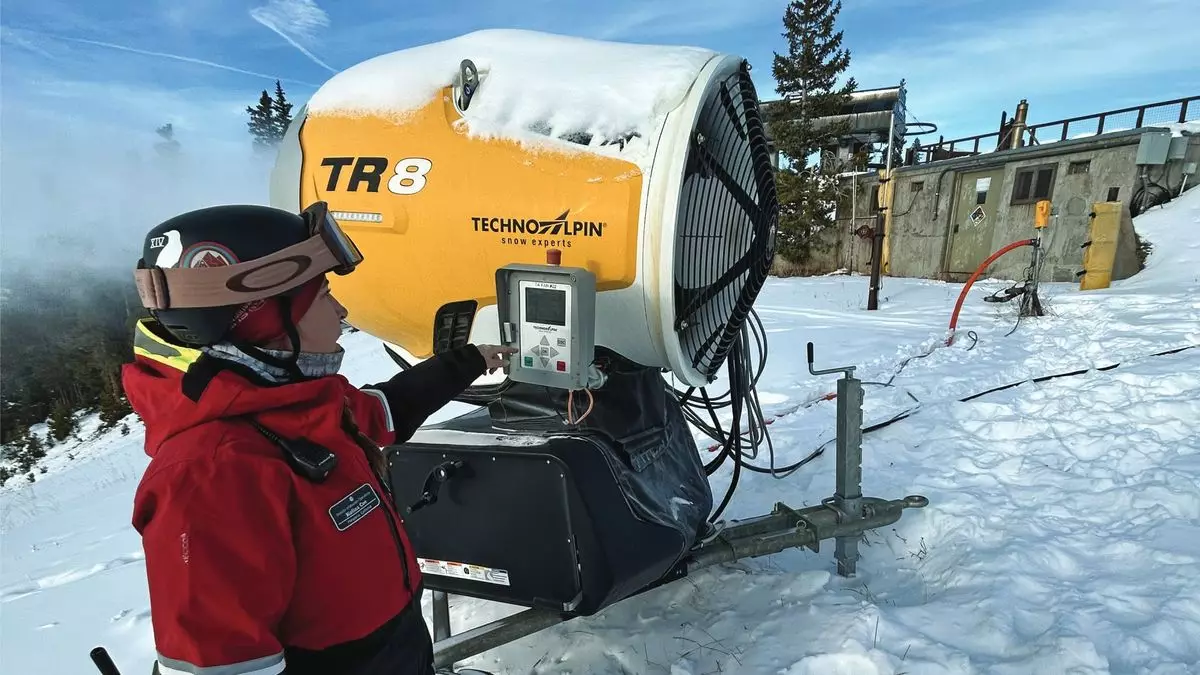Ski resorts, once purely reliant on natural snowfalls, are evolving into technologically advanced and environmentally conscious destinations. Keystone Resort in Colorado serves as a prime example of this transformation, showcasing how innovation and sustainable practices can redefine the skiing experience.
As the ski season gears up, the significance of snowmaking has never been more pronounced. Just before Thanksgiving, Keystone’s operations were buzzing with the sounds of machines diligently crafting artificial snow atop Dercum Mountain, which rises to an impressive elevation of 11,640 feet. With a diverse arsenal of 672 fixed and mobile snow guns, Keystone can blanket about 40% of its expansive 3,148 skiable areas with snow, significantly boosting its capacity to start the season reliably, irrespective of natural snowfall patterns.
The festival of snowmaking at Keystone is only part of the story. With equipment from Italian manufacturer TechnoAlpin, mobile fan guns have been strategically placed on slopes like Mozart to utilize specific weather conditions, even negative temperatures, to produce optimal snow. Thanks to considerable advancements in technology, resorts are now capable of executing snowmaking operations more efficiently, which is increasingly vital in the context of climate change. This not only enhances the skiing experience for enthusiasts but also ensures economic viability for resorts trying to attract visitors year-round.
For ski areas, the economic incentives tied to advanced snowmaking are compelling. At Keystone, enhancements in snowmaking infrastructure since 2019 have enabled the resort to shift its average opening date from November 8 to an impressive October 27. This earlier start not only draws in more skiers but also extends the season, thereby fostering economic growth for local businesses.
Such advancements in technology underscore that it’s not merely about generating snow but doing so in a way that preserves resources. The focus on sustainability resonates not only with the companies operating ski resorts but also with the visitors who increasingly value environmentally friendly practices. Vail Resorts, the parent company of Keystone, has set ambitious goals to achieve net-zero operations by 2030, with an ongoing commitment to renewable energy.
The integration of automated systems marks another critical step forward in snowmaking technology. The ability to monitor and operate snow guns remotely allows Keystone to optimize their snow production effortlessly. As snowmaking controller Nick Daly explained, automation facilitates timely responses to fluctuating weather patterns, thus maximizing the efficiency of snow production.
In a world where every moment counts, the shift from manual operations to automated systems is monumental. Keystone can now activate its snowmaking system in minutes—previously a process that took nearly two hours. This innovation not only enhances production efficiency but also significantly reduces on-mountain energy consumption by staff, demonstrating the dual benefit of cost-effectiveness and ecological sustainability.
Research from neighboring Vail Mountain provides specific insights into the scale of these efficiency gains. Vail’s investment in automation has reportedly resulted in an 85% increase in efficiency, making a strong case for the modernization of snowmaking practices across the board.
For Keystone, the combination of improved technology and a focus on sustainability represents a strategic approach to ensure its long-term viability amidst the challenges posed by climate change. As Kate Schifani, one of the mountain operations directors, aptly describes, fostering certainty in opening dates directly correlates with growing a dedicated skiing community. “If we can ensure certainty around that October opening here at Keystone, our guests can expect that they’re going to be able to ski,” she states, emphasizing the interconnectedness of snow reliability and industry growth.
The future of ski resorts like Keystone hinges not only on snowmaking technology but also on a broader commitment to sustainability, economic prosperity, and community engagement. As the industry moves forward, these elements will be crucial in navigating the complexities of climate change while keeping the spirit of winter sports alive. The dedication exhibited by ski resorts like Keystone embodies a broader trend of responsible stewardship, ultimately ensuring that both visitors and local ecosystems can benefit from the outdoor wonders of winter.


Leave a Reply